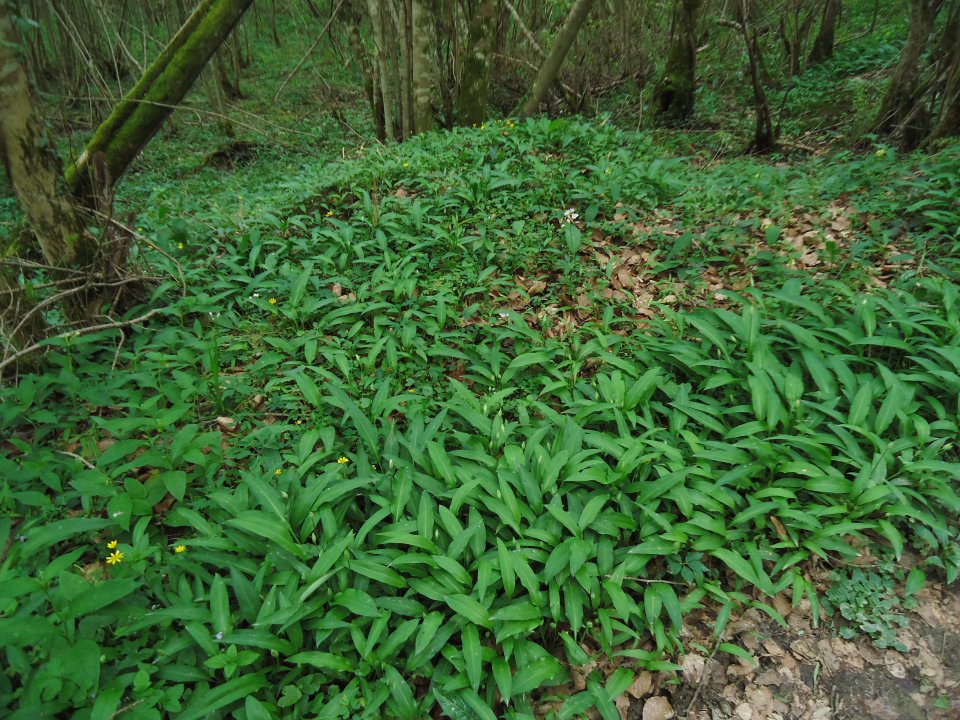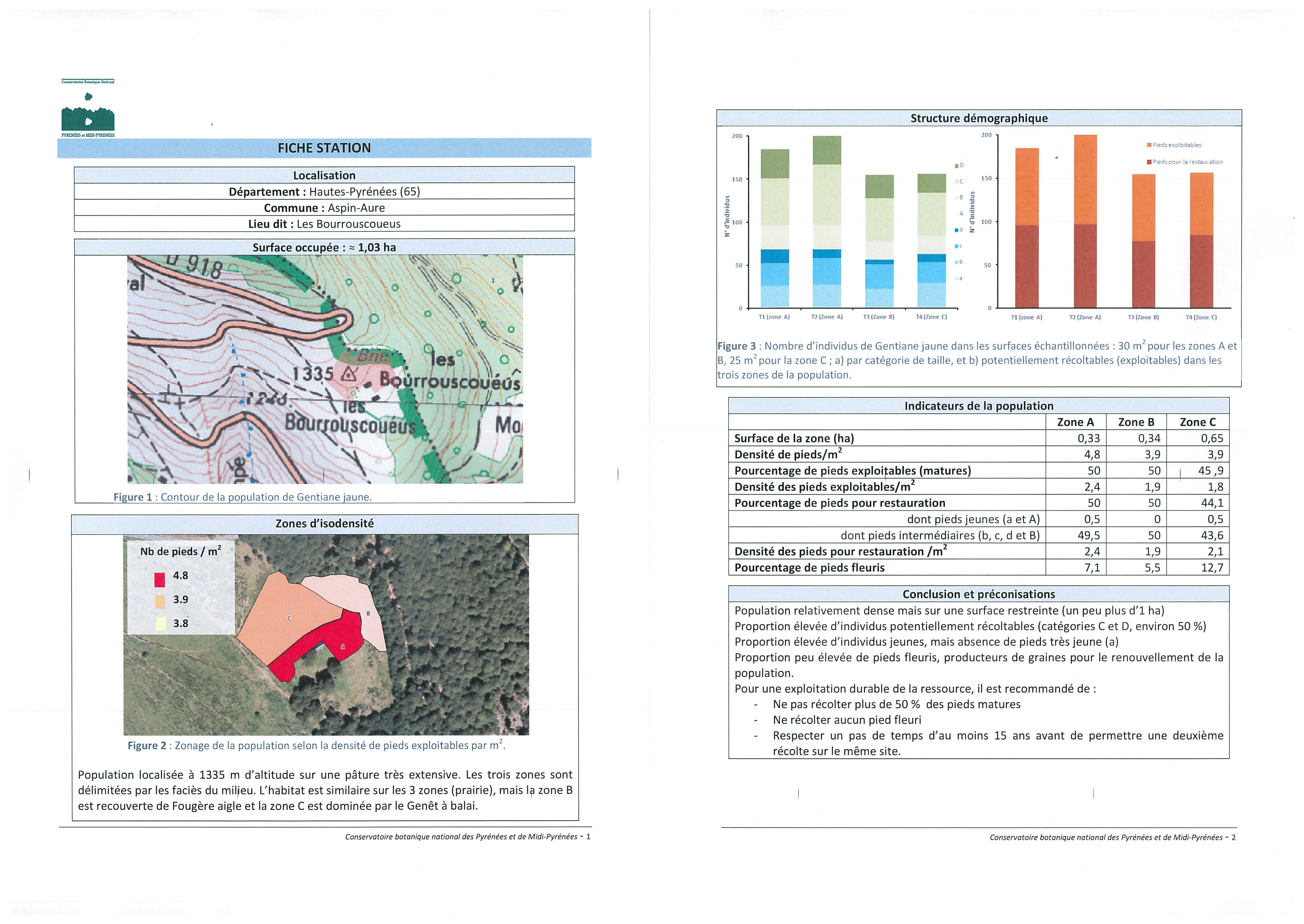
The PyCuP project is supporting the Pyrenean stakeholders in their reflexion and efforts toward a regulation of picking practices, for a sustainable valuation of the local wild plant resources. It aims at answering the main questions of the public about the role of such activities in a “wild mountain”. Therefore, the project creates awareness about the issues of these natural resources’ exploitation.
Three species are especially studied through the PyCuP project (2019-2021) because of their specific natural habitats: great yellow gentian (Gentiana lutea L.), arnica (Arnica montana L.) and wild garlic (Allium ursinum L.). Being sought out by growing industrial markets, the picking of these limited resources has to be regulated. The project thus meets the high expectations of communities and owners, natural areas managers (sustainable and concerted management), administrations (regulation, conflict resolution) and professionals themselves (practice conditions).
Implementation of local management plans (at municipal’s or municipality communities’ scale) including:
- Resources assessment: mapping, land status and uses of the sites, coverage rate, estimation of exploitable resource;
- Memory of picking sites through the record of harvest history;
- Management recommendations: picking rate, rotations cycles;
- Populations monitoring for the harvested species.
Adapted protocols are specifically built for the three targeted species, in close cooperation with all stakeholders.
Developing partnerships, management plans and monitoring systems is essential. Even if some questions are remaining open, these tools allow to set recommendations for a sustainable picking. For example, wild garlic is a species on the edge of familial and professional picking, which requires to:
- Avoid harvesting every year in the same site and spread as much as possible the frequentation;
- Maintain zones free from picking on each site;
- Only collect leaves which size is larger than 10 cm (width of the palm of the hand), without removing bulbs or petiole;
- Avoid picking all the leave of an individual plant;
- Lower the picking of flower buds and flowers.
The multidisciplinary team of the Conservatoire provides a rich overview and practical propositions to these issues, thanks to skills developed both in social and natural sciences. The close cooperation built at every level of the value chain leads to significant improvement.
However, in order to maintain their efficiency over time and remain responsive, the suggested schemes have to be consolidated by human and financial means. It is important that the whole vision of the exploitation of natural resources keeps the ability to evolve.
The PyCuP program enable the Conservatoire Botanique to refine its expertise regarding management plans of picked AMP and social approaches of this sector. Though, another goal is to assist every stakeholder in becoming autonomous in its area. In parallel, regulation and rules have to evolve. Beyond pilot regions, management plans should also be developed at different territorial scales. Finally, the support to value chains of other AMP must go on.
Raphaële Garreta, raphaele.garreta@cbnpmp.fr, http://www.cbnpmp.fr/
Raphaël Bec, raphael.bec@cnpf.fr, https://occitanie.cnpf.fr/
Further information
Cambecèdes J., Garreta R., 2018 - « The harvesting of wild plants: exploitation of natural resources and conservation of a natural heritage », Actes du 2ème Colloque International sur les Ressources Sylvopastorales et le Développement Durable en Méditerranée, 17-20 octobre 2017, Tabarka (Tunisie), in Journal of new sciences, Agriculture and Biotechnologie, CIRS (13), pp. 3355-3365
Cambecèdes J., Garreta R., Gire L., Morisson B., Garcia J., Durand B., 2018 – Exploiter et préserver. Vers un plan de gestion durable de la gentiane jaune dans les Pyrénées, CBNPMP, rapport ValuePAM, 112 p.
Garreta R., Lavabre M. et Morisson B., 2017- Dires et gestes de cueilleurs. Une enquête ethnographique auprès de cueilleurs professionnels. Trois cueillettes : Arnica, Thé d’Aubrac et Gentiane jaune. Conservatoire botanique national des Pyrénées et Midi-Pyrénées, Petit objet multimédia en ligne (https://cbnpmp.fr/gestes-et-dires-de-cueilleurs), 21'47.
Jenkins M., Timoshina A., Cornthwaite M., 2018 – Wild at home : Exploring the global harvest, trade and use of wild plants ingredients, 44p.
Piana M., 2020 - Mise en place de l’évaluation des risques encourus par l’Ail des ours face à la cueillette sur le territoire pyrénéen, mémoire de Master 2 Bio GET, Université de Montpellier, CBNPMP, 64 p.
© Raphaële Garreta - CBNPMP

Summary sheet of a picking site for gentian, with harvesting recommendations. © Lionel Gire - CBNPMP
